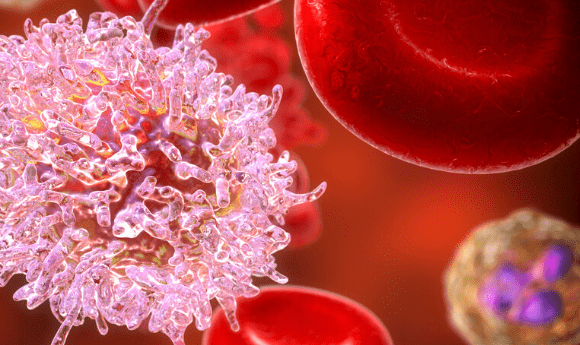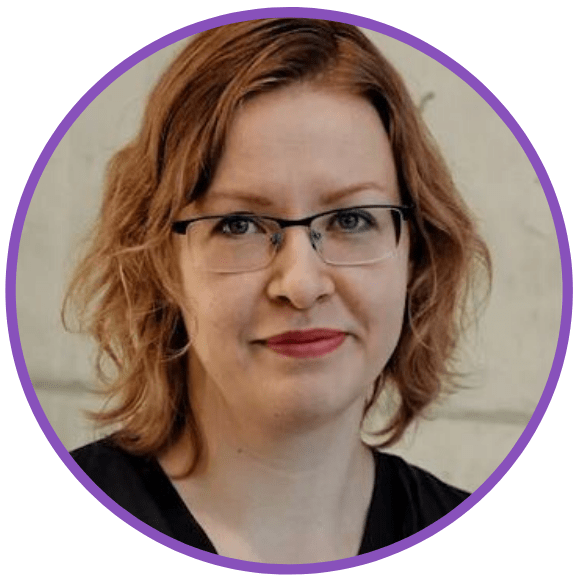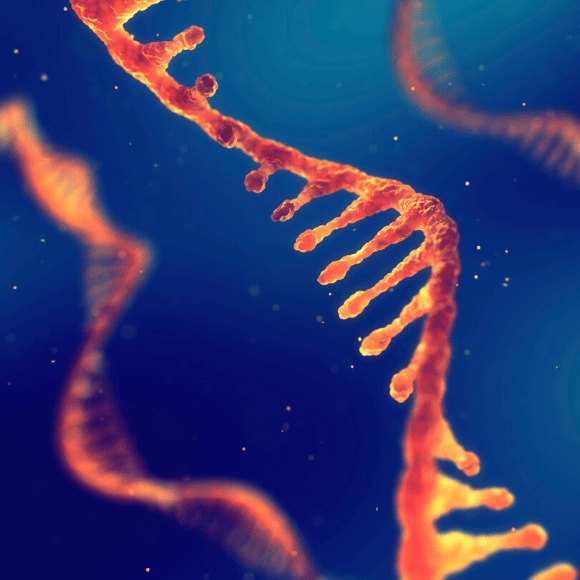Karla Plevova on the genomics of chronic lymphocytic leukemia

At ASHG 2019 (15-19 October; Houston, TX, USA) BioTechniques’ Editor in Chief Francesca Lake caught up with Karla Plevova to discuss her work exploring the genomic background of chronic lymphocytic leukemia (CLL) and the challenges she faces in genome sequencing.
Please could you introduce yourself?
 My name is Karla Plevova, and I work as a postdoctoral researcher at the University Hospital Brno (Czechia) and at Masaryk University (MUNI, Brno, Czechia), in the Central European Institute of Technology. I have been working at the hospital for 12 years, during which I have gained experience in routine diagnostics and biobanking of samples from hematology-oncology patients, mainly suffering from chronic lymphocytic leukemia (CLL). We have now created a large biobank of samples that provides a good base for research. Recently, I have moved on a temporary basis to the European Molecule Biology Laboratory (EMBL, Heidelberg, Germany), where I am conducting ongoing research and developing new skills. This includes analyzing cell-free DNA (cfDNA), which has recently emerged as a potentially useful material for monitoring cancer patients. I was testing and optimizing a protocol for whole-genome sequencing library preparation from cfDNA.
My name is Karla Plevova, and I work as a postdoctoral researcher at the University Hospital Brno (Czechia) and at Masaryk University (MUNI, Brno, Czechia), in the Central European Institute of Technology. I have been working at the hospital for 12 years, during which I have gained experience in routine diagnostics and biobanking of samples from hematology-oncology patients, mainly suffering from chronic lymphocytic leukemia (CLL). We have now created a large biobank of samples that provides a good base for research. Recently, I have moved on a temporary basis to the European Molecule Biology Laboratory (EMBL, Heidelberg, Germany), where I am conducting ongoing research and developing new skills. This includes analyzing cell-free DNA (cfDNA), which has recently emerged as a potentially useful material for monitoring cancer patients. I was testing and optimizing a protocol for whole-genome sequencing library preparation from cfDNA.
Can you please tell us about the work that you are doing with CLL?
Our long-term goal is to understand the genomic background of CLL. It is well understood already; however, there is still room for further research. CLL is a very heterogeneous disease and, importantly, there’s often clonal evolution resulting in the development of therapy resistance. Therefore, it is important to monitor CLL patients during their disease course. For this, we use established markers such as TP53 gene mutations and immunoglobulin gene rearrangements. TP53 defects are especially important for patients undergoing chemoimmunotherapy, which can create room for expansion of resistant TP53-mutated clones. Recently, other genes have been implicated in emerging resistance to new therapies. Therefore, it is important to monitor patients to see what’s happening throughout the disease course and to be able to give them appropriate therapy or change it whenever it’s necessary.
What techniques are you using to determine this?
Currently, to study clonal evolution and therapy resistance we use mainly next-generation sequencing (NGS) of tumor genomic DNA. However, other methods are important as well to complement our results, including cytogenetic techniques such as fluorescence in-situ hybridization (FISH). For some genes, we still use Sanger sequencing. Now, we are also starting some projects and setting diagnostic methods using digital PCR.
Among NGS techniques, capture-based methods are quite popular for most of the markers that we follow in these patients. We have recently developed a gene panel that we are now starting to use in our patients. This is a collection of the most important genes and molecular markers that should be investigated. Still for certain genes, such as TP53, we use deep amplicon sequencing because we cannot go as deep as we’d like with capture-based methods. With an amplicon-based approach we are able to detect mutant alleles of approximately 0.1% of allelic frequency.
In our research projects, we also run exome sequencing and, in selected patients, whole-genome sequencing. However, this is a financially demanding technique, meaning we cannot use it so widely as we would like to.
Overall, we use a broad spectrum of techniques – actually the whole spectrum available – and it is meaningful to combine different approaches or use just one according to a given question.
 It’s a match! RNA sequencing and the future of oncology management
It’s a match! RNA sequencing and the future of oncology management
Researchers have demonstrated that RNA sequencing could be useful in accurate genetic profiling of tumors to guide successful targeted cancer treatments.
Can you tell us more about the challenges you face within genome sequencing and how you have mitigated those?
In whole genome sequencing, the biggest challenge is finance in combination with clinical applicability of somatic whole genome analysis in cancer patients. We now use ‘shallow’ sequencing for the detection of chromosomal abnormalities. However, in some cases, for example those with complex chromosomal rearrangements, we need deeper sequencing with at least 30X coverage, which is still expensive. Sensitivity of available methods is very important. If shallow sequencing is used, then it is beneficial to combine such data with targeted deep sequencing of selected clinically relevant genes. However, extensive clinical studies to support this approach are missing, so it is not a part of standard care. It will still require time to introduce it in a meaningful way in routine diagnostics.
Another challenge is the whole-genome data analysis and interpretation. We are collaborating with the Genomics Core Facility at EMBL, namely with the head of the facility, Vladimir Benes, who has broad knowledge about state-of-the-art technologies and Tobias Rausch, an experienced bioinformatician with deep insight in genomics data. After Rausch’s analysis, a lot of manual checking of variances is required. It’s still an area where we have a lot to learn.
In many instances, another challenge we face is getting access to the material from a tumor. Generally, in leukemias we have good access to samples from blood aspiration during regular examinations of patients. We can then separate leukemic cells, which provides a very pure population for our tests. This is easy in patients who are untreated or who have high white blood cell counts that persist during or after therapy. However, in some patients the cells are not released in the blood stream in high abundancy, and we see progression within secondary lymphoid organs, such as the lymph nodes that can be deep within the body. Then, the situation is analogous to solid tumors – the cells are not easily accessible for genotyping unless we do tissue biopsies, which are invasive and can be demanding on patients. Until recently, that was the only way to genotype tumors in those patients.
The concept of testing cfDNA has been shown to work in solid tumors and is being explored in lymphoid malignancies. Since it was working in other areas of oncology research and diagnostics, we started thinking about setting methods for analyzing cfDNA in our work. At the beginning I was surprised that it is possible to create a library for whole-genome sequencing from cell-free DNA! I don’t know why because I now know that it works very nicely. In fact, we developed a protocol for efficient cfDNA library preparation to investigate CLL using Thermo Fisher Scientific’s Collibri PS DNA Library Prep Kits and we were able to produce consistent cfDNA sequencing libraries from patient plasma samples.
cfDNA library preparation is challenging because the material is degraded and the fragments are short, and one has a small amount of material that can be used for experiments. First, we decided to try whole-genome sequencing, but we were aware that we wouldn’t be able to go deep enough with coverage, mainly due to affordability. However, the technique is sufficient for detection of larger aberrations such as chromosomal deletions/amplifications and it enables us to explore many biological questions related to the nature of circulating tumor DNA. For clinical applications we plan to implement the methods for deep sequencing of specific markers in order to get higher sensitivity. For cfDNA it is a more complex task than for genomic DNA, but it’s feasible and it will provide us with a comprehensive method for precise monitoring of patients undergoing therapy.
What are the next steps?
Our next steps are to finish analyzing the data from the patients we tested using whole-genome sequencing – that data is still fresh, and there is a lot we should be able to get from them. There are many challenges, such as quantification of circulating tumor DNA and corresponding genomic abnormalities, adjustment of the analysis to specific DNA cleavage and more.
Meanwhile, my colleagues have already started to set up new targeted methods, so we can go deeper for reliable residual disease monitoring. For this, we also need to choose proper methods for screening markers prior to the start of therapy, so we can then follow specific markers with the targeted techniques in individual patients under therapy administration. I believe the way to this is already paved. In CLL, it will be especially useful to set exact diagnostic algorithms using these techniques for cases who are in a risk of disease transformation into more aggressive malignancy as it is usually fatal for patients and often difficult to study due to the common absence of abnormalities in blood differential counts. Thus, it’s critical to identify markers and follow them carefully so we can recognize progression as early as possible.
You can view Karla’s presentation from the conference here: https://players.brightcove.net/3663210762001/default_default/index.html?videoId=6133669367001